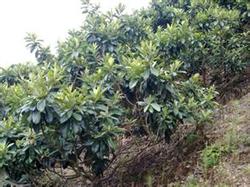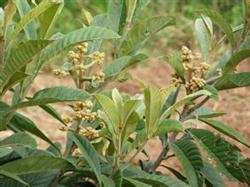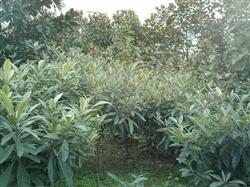How to manage the postharvest loquat

In order to overcome the phenomenon of big and small years caused by poor management of loquat, postharvest management must be strengthened to prepare for a good harvest next year. 1. Strengthen the management of fertilizer and water (1) from April to May after fruit harvest, the annular ditch under the canopy was used to fertilize 100 kg of rotten human manure or cattle and pig manure, plus 250 grams of urea; (2) from August to September, before loquat blossoms, 5 kg of rotten vegetable cake or bean cake fertilizer was applied in the ring-opening ditch to promote the growth of buds. (3) in the middle of December, 100 kg of soil and plant ash or pond mud was applied to the root or ring ditch, which was beneficial to increase the fruit setting rate and promote the spring shoot. (4) proper watering to resist drought was beneficial to the growth of summer shoot. Second, the main pests for the prevention and control of diseases and insect pests are longicorn beetles, yellow caterpillars and so on. The larvae of longicorn beetles can be killed artificially or by blocking wormholes with insecticides. when yellow caterpillars are damaged from May to June, they can be killed manually or sprayed with dimethoate or trichlorfon 100 times. The main diseases are anthracnose and leaf spot. When the leaves are unfolded, they are sprayed with 20% methyl topiramate 800 mi 1000 times or 40% ethylphosphine aluminum 500 times.
- Prev

Spring shoot fertilizer should be applied to adult loquat trees in time.
Loquat likes warm and humid climate, blossoms in autumn and winter, and fruit ripens in late spring and early summer. Since last autumn, there has been drought and little rain in Guangdong, so fruit growers should actively water and fertilize loquat, especially adult trees should apply spring shoot fertilizer in time to strive for a bumper harvest this year. First, young tree fertilization (1-3 years) loquat young tree.
- Next

Scientific Management of Postharvest Loquat
At present, the basic harvest of loquat is over, and the postharvest production management is directly related to the tree potential growth and next year's fruit. The postharvest production management of loquat should be carried out mainly from three aspects: fertilization, pruning and pest control. Full postharvest fertilizer loquat should be fertilized in time to promote the development of summer shoots, mainly nitrogen fertilizer.
Related
- Moge, come on! The staff of the peasant association in the producing area of cantaloupe were frightened when the crowd gathered.
- Causes and Solutions of low Fruit setting rate of Apple
- Symptoms and control measures of passion fruit virus disease
- Fruit growing lesson: how do apple orchards keep high yields?
- Can you build orchards in the mountains? What are the pros and cons?
- How to manage the coloring period of Crisson grape?
- This paper introduces the processing technology of two kinds of fig products.
- How much is a month for retired teachers in rural areas by 2020?
- How can strawberry planting increase sugar content? We should pay attention to management in many aspects.
- What are the cultivation techniques on how to improve the yield of golden fruit?

